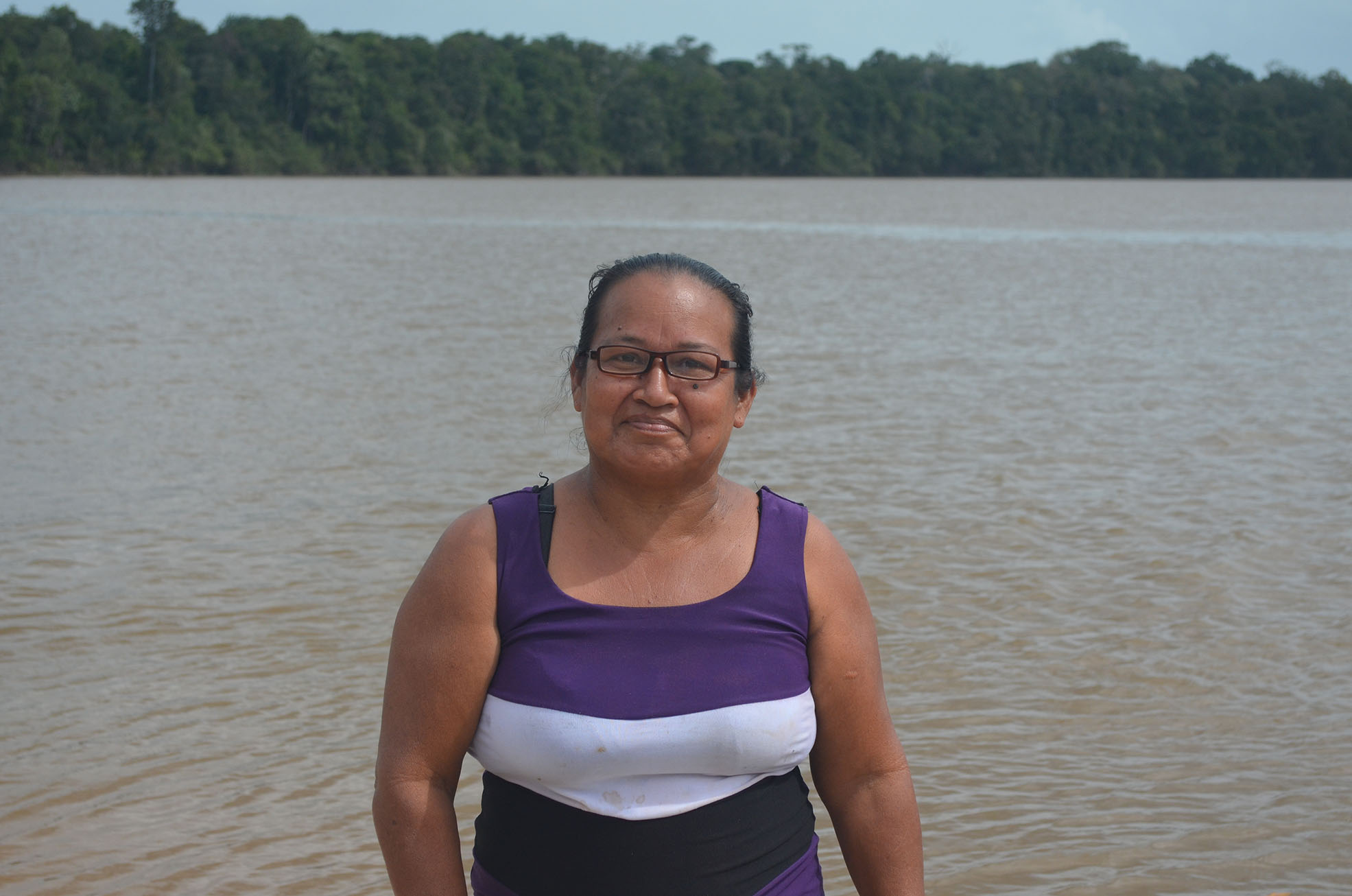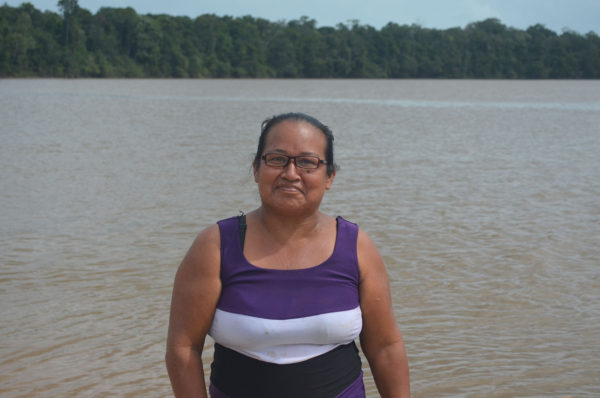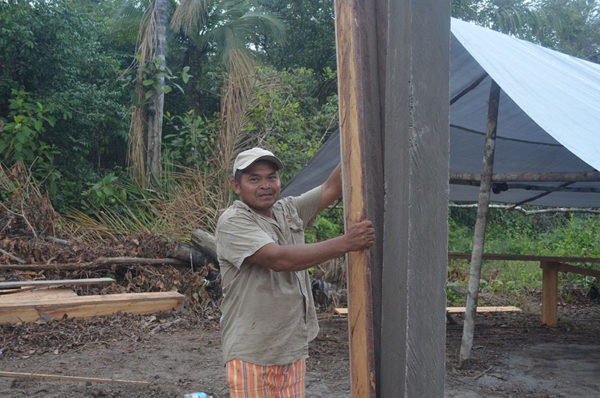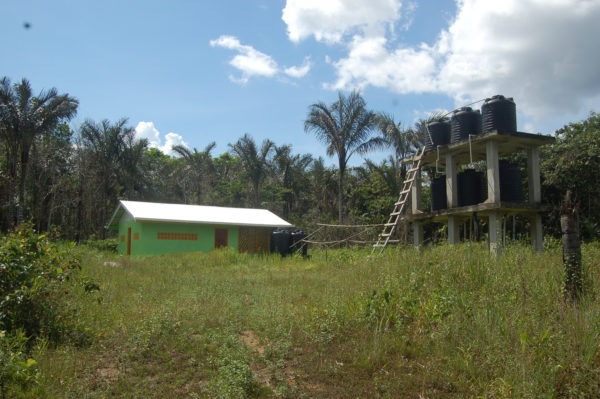Over 60 women of Rockstone Village are anticipating much needed employment that is expected to accompany the completion of a community processing plant that will use every part of the cassava to manufacture at least 6 different products, Toshao of the village Rudolph Simon has said. And with funds for the purchase of the mill released last week, realization of the project is not far off.
When Stabroek News first interviewed Simon in February, he had explained that the project came about as a result of a request made by the women of the Region Ten (Upper Demerara/Upper Berbice) village back in 2011, as their selection for the Community Development Project (CDP).
He further stated that the main focus of the project was reducing unemployment among women since not many job opportunities were available in the community. Additionally, the implementation of such a project would encourage residents to become more engaged in agriculture.
“When we look at the women in the community, they don’t really have no kind of jobs. So we decided that we will put down a cassava processing plant so that we can get more women involved,” he had noted. Simon went on to explain that this was because most of the men in the village worked in gold mining and were gone for extended periods. When they managed to make it back home, they would return with no money and plagued with malaria or other illnesses they would have contracted in the mining areas. As a result, he stated, the women were left to struggle to make ends meet.
Shedding light on the project itself, Simon had stated that it is designed to allow the maximum extraction of usable material from the cassava tuber to manufacture products such as cassava bread, tapioca, cassareep, farine and alcoholic beverages such as parakari. This is expected to be facilitated by the special equipment that will be purchased, which will allow for more efficient and easier operations.
With much emphasis being placed on not wasting any of the cassava, Simon noted that even the scraps that may be left over will be used in the form of organic manure.
“We told Minister [of Indigenous Peoples Affairs Sydney] Allicock that with this project we are looking to see whatever we can get out of the cassava plant. I told him that it’s not just the cassava bread, or the farine, the tapioca, or the cassareep; we want to be able to produce beverages from the cassava as well. We also want to make chicken feed; the aim is not having any waste of the plant. And even down to the scraps that are left behind, we are not throwing it away, instead, we are using it as manure to mould plants,” he added.
During the first visit, Stabroek News got the chance to see the proposed site for the processing plant, where it was observed that the foundation for the building had already been completed.
At that time, Simon had explained that the work was being done in stages in order to facilitate the submission of progress reports to the Ministry of Indigenous Peoples Affairs.
Additionally, the Toshao stressed the important role of an active management team overlooking the project, explaining that the body was established to ensure that the project remains a sustainable asset to the villagers.
“We don’t want to just build this thing and have it abandoned after a time, we want it to continue,” he stated.
And while the construction of the building was important, of equal importance was the establishment and expansion of cassava fields to facilitate the cultivation of the main raw material needed.
As a result, the clearing of land began to facilitate the expansion of the already existing five acres to 10 acres. However, Deputy Toshao of Rockstone Karron Williams had explained that work had to be temporarily halted after the workers had encountered some Africanised bees. But she stated that they were also encouraging residents to use their own land to cultivate cassava that could be sold to the factory.
Williams noted that the success of the project depends wholly on the villagers, both the men and women. Once successful, it is expected that apart from providing employment, the village’s economy will benefit from the circulation of money.
Like Simon, Williams placed special emphasis on the village women, the majority of whom are said to be single parents.
“You have to do something; you have to learn to do something. Some people say that cassava is hard work but everything is an income right now and I tell you if you can get up and do it, it is going to happen,” she said, adding that cassava should be a raw material that is just as valuable as gold since it holds great potential.
“It’s not like before when you have to spend the day grating cassava. I have a mill and I tell you, in the space of 15 minutes, I can grate five buckets, once I know what I’m doing,” she shared.
Asked about marketing the finished products, Williams was pleased to note that the management team had already been able to secure several markets in both Linden and Georgetown and were in the process of finding others.
Williams said that once the project satisfies expectations, steps will be taken to further expand its capacity, as well as reach new markets. She said they hoped to be able to establish a website to better market the products that will be manufactured and to cater for exports.
The establishment of the Rockstone cassava processing plant comes at a cost of $5 million and happens to be one of several CDPs that are currently being rolled by the Ministry of Indigenous Affairs with funding being sourced from the Amerindian Development Fund.
Simon had noted that while the project was requested since 2011, it never got off the ground because the necessary funding was not given at that time. However, the allocations were made last September to cover construction of the building, land clearing and purchasing the necessary equipment.
When Stabroek News returned to Rockstone last month, the building was completed, but the second phase of the project which entailed the procurement of the mill had been delayed.
Simon noted that villagers were concerned about the future of the cassava they had already planted in anticipation of being used in the processing plant.
Stabroek News contacted Coordinator of the Amerindian Development Fund Omar Bispat on Monday and he explained that there had been a delay in the submission of the report of the management team. However, that report has been submitted and when he spoke to this newspaper, the funds had been processed were available to the community for the purchasing of the mill.










